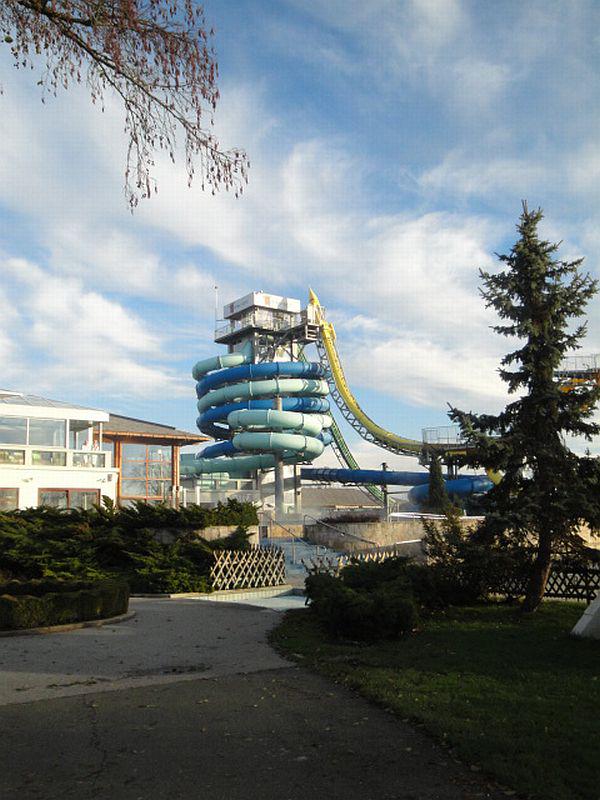
Thermal spas, which attract visitors from across Europe and beyond, are an increasingly important source of income for Slovenia’s tourism industry. Several of Slovenia’s spa resorts date back to the glorious days of the Austro-Hungarian Empire. However, the history of one spa destination in northeastern Slovenia is much shorter – and its came about entirely by accident.
Today, Moravske Toplice is a thriving village in northeastern Slovenia. Its very name (“toplice” means “thermal spa” in Slovenian) references the hot springs that put it on the map and gave rise to numerous hotels, swimming complexes, bed-and-breakfasts, vacation homes, and even a luxurious golf course. Yet, just several decades ago, the village was known as Moravci and had neither tourism nor hot springs.
In the 1950s, state-owned companies were looking for oil in Slovenia’s Prekmurje region, the part of the country once covered by the Pannonian Sea. Small amounts of oil had been found around the town of Lendava, and explorers were optimistic that the fields around Moravci may hold more of the precious liquid.
In 1960, they began to drill around the village. For the villagers, who made their living from farming, the site of oil drills and other equipment was a novel sight. The exploration promised to turn their village into the center of Slovenia’s oil industry. However, instead of vast quantities of oil, hot water – with a just a faint aroma of oil – bubbled up to the surface. The project was declared a failure and the exploration team moved on.
But despite the lack of interest from authorities, the hot springs remained. The villagers were drawn to the pools of hot waters, and asked the authorities to build a swimming pool. After their request went unheeded, the villagers decided to set up a makeshift themselves.
It was an instant hit; not only was the concept of a swimming pool a novel experience for the local population, the warm water also made swimming especially enjoyable in every season. In addition, the water acquired a reputation for being healthful, especially for people suffering from rheumatic illnesses. In 1964, it was officially declared to be healing water, and the tourist boom in the village was about to begin. As it turned out, the “liquid gold” of Moravci was water rather than oil.
More and more people from elsewhere began to visit Moravci; ever- larger pools were built, and new water wells were established to cope with the increasing demand. In 1974, straw-covered cottages, built in the traditional style of the area, hosted the first overnight visitors.
In the 1980s, the first large hotel was built in the village and in 1984, Moravci was renamed Moravske Toplice in honor of the thermal water that put it on the map.
More hotels, including a five-star establishment, were later constructed and Moravske Toplice eventually became Slovenia’s sixth-biggest tourism destination in terms of overnight stays. It even helped to bring about a tourist revival to what had once been a purely agricultural region.
Nowadays, more than 100,000 tourists from all across Europe visit Moravske Toplice each year. During their stay, they can try out several old-style pools, whose untreated water still has its distinctive aroma of oil – just like the water that bubbled up to the surface in 1960 and brought life to what had been a sleepy Pannonian village.

































































